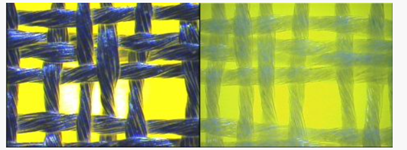Outside vs. Inside
Solar radiation does not turn into heat until it is absorbed. Verosol fabrics with a nano layer of aluminium are highly reflective (up to 85% reflection). This means that 85% of solar radiation is reflected, preventing absorption and allowing solar radiation to escape through the window. This means that Verosol fabrics are very effective as indoor solar shading and an equivalent alternative to outdoor sun screens. This has been independently verified through the given equivalency statements.
Metallised indoor solar shading offer several benefits:
- The costs of outdoor solar shading are much higher than indoor solar shading. For example: purchase costs, installation costs and maintenance costs.
- Indoor solar shading does not affect the design of the building's facade.
- Indoor solar shading can be used regardless of weather conditions.
- Metallised blinds have additional insulating benefits during the winter.
If heat is trapped inside, unfortunately you can’t get it out. The trick is to prevent incoming solar energy (light) being transformed into heat by absorption (short wave into long wave radiation). Aluminium reflects the incoming light back through the window BEFORE it can be absorbed and turns into heat. Imagine a mirror outside the window. You can look through glass to the mirror and it reflects back through the same mirror so you can see yourself. Light/energy can be reflected back through glazing!
The science behind metallised fabrics
The image shows the difference between white metallised and white non-metallised fabrics.
The non-metallised white fabric (on the right) allows diffuse light to pass through the fibres. The metallised fabric (left) reflects the light and prevents the transmission of diffuse light. The woven fabric properties (which determine the view through) remain intact, resulting in excellent visual and thermal comfort.

Vacuum metallisation works on the same principle as bathroom mirrors fogging up after a hot shower. Warm vapour condenses and adheres to a cooler surface.
In our metallising chamber, we heat pure aluminium to 1400°C in a vacuum to create aluminium vapour. The vapour rises in the chamber and condenses on the fibres on one side of the fabric. The advantage of this process is that only the individual fibres receive a very thin (a few nanometers thick) layer of aluminium and the fabric and its properties remain unchanged.
As a counterpart, coatings are often thicker and therefore create heavier and thicker fabrics. In addition, the openness of the weave structure can be affected, which reduces view through.
No, because the yarns of the fabrics are round. Therefore they only reflect diffuse light to the outside. Only flat reflective layers such as mirrors will create this glare reflection.
Glare issues are determined by light transmission, NOT by the openness factor. The total light transmission is the combination of the direct/specular light transmission (which is equal to the openness factor) and the diffuse light transmission. Diffuse light transmission is considerably higher and is the reason for glare problems. Therefore, the focus should be on reducing diffuse transmission and not direct transmission, as this will limit view through.
Two options to reduce diffuse light transmission:
- Usages of dark fabrics, but these absorb energy and convert it into heat.
- Covering the yarns with a perfect layer of aluminium that is not transparent.
No, because then it would partly lose its reflectivity and Verosol strives for the best possible result.
Emissivity (or E) is the value on a scale from 0 (minimum) to 1 (maximum) that describes the ability of materials to radiate heat (infra-red radiation). Non-metallised fabrics have an E value between 0.8 and 0.9, whereas our SilverScreen 2% has a value of 0.03.
Low E means that a material hardly radiates heat and that the material can act as a barrier for the natural heat flow to colder areas. Aluminium has one of the lowest E-values of all materials (gold and silver are the lowest). It acts as an insulator in the same manner as a thermos does. If you fill a thermos with boiling water, you don’t feel this on the outside.
Verosol SilverScreen 2% is the lowest E-blind available. With this product:
- You will prevent drought, meaning no discomfort near windows;
- The product has better insulating properties than a normal cellular blind;
- The insulative properties can provide on average 10% savings on your energy bill.
Maintenance
Yes, but be careful with the metallised parts. Cleaning with a soft cloth or even neutral hand soap is fine. Do not use aggressive detergents and do not rub the metallised side too hard. Be careful with the product. It has many advantages, but you have to be extra careful with it. Compare the blind with a beautiful, expensive suit. Do you put it in the washing machine? No, you take it to the dry cleaner. Not because of the low quality, but to take extra care of the benefits it will give you.